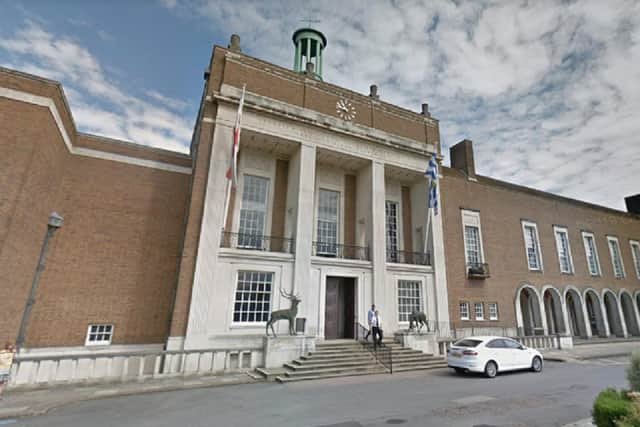Increase in fly-tipping recorded across Hertfordshire in past 12 months
and live on Freeview channel 276
Fly-tipping across Hertfordshire has gone up by more than 50 per cent since the start of the Covid-19 pandemic, new figures suggest.
In 2019/20 there were 11,208 incidents of fly-tipping reported across the county – with a monthly average of 934.
Advertisement
Hide AdAdvertisement
Hide AdBut latest data shows that in the nine months between April and December last year (2020) there were 13,026 fly-tipping incidents – with a monthly average of 1447.


Based on data presented to the Partnership, the only borough to have seen a decrease in the number of fly-tipping incidents so far this year has been Broxbourne, where average monthly incidents are 60 – compared to 67 in 2019/20.
It shows that the average number of fly-tipping incidents between April and December in 2020 for each district and borough (and for 2019 in brackets) is: Dacorum 116 (101); Broxbourne 60 (67); East Herts 108 (76); Hertsmere 138 (105); North Herts 149 (94); St Albans 76 (67); Stevenage 252 (152); Three Rivers 56 (46) ; Watford 107 (84); Welwyn Hatfield 387 (142).
Based on current projections, Hertfordshire waste experts expect the number of incidents by the end of the year to reach 17,368.
Advertisement
Hide AdAdvertisement
Hide AdThat’s more than 50 per cent higher than the year before – and the highest level since 2012.
The data was reported to a meeting of the Hertfordshire Waste Partnership on Monday (January 25).
And Partnership development manager Duncan Jones said: “We have seen excessive levels of fly-tipping in November and December – January is panning out to be the same way.
“Where we currently stand we are about 54 per cent up on the same period last year.
Advertisement
Hide AdAdvertisement
Hide Ad“And as a result 2021 will be highest level of fly-tipping on record since 2012, which is really disappointing given that in 2019 we had he second lowest annual total reported for the Partnership.
“It’s a situation that’s replicated in other parts of the country, but there are others that have seen an overall reduction during the pandemic.”
According to the data more than 40 per cent of the fly-tipping incidents reported this year have been in Welwyn Hatfield or in Stevenage.
The monthly average of fly-tipping incidents in Welwyn Hatfield so far this year (2020/21) is 387, according to the data.
Advertisement
Hide AdAdvertisement
Hide AdAnd that’s 172.7 per cent higher than last year, when the monthly average was 142.
In Stevenage the data shows that the monthly average so far in 2020/21 in 252 incidents a month – which is 65 per cent higher than the average in 2019/20.
And Mr Jones suggested there may be a need for some highly localised campaigning as a result.
Following the meeting, a spokesperson for Welwyn Hatfield Borough Council highlighted the ongoing work by the council to address and prevent fly-tipping,
Advertisement
Hide AdAdvertisement
Hide AdAnd she urged residents to think more carefully about how they get rid of their waste – especially if having a ‘clear out’.
“We work hard to tackle fly tipping in Welwyn Hatfield and are disappointed rates have increased, particularly considering the consistent decline we’ve seen in previous years,” she said.
“We’re doing everything we can, not only to clear waste dumped on our own land quickly, but to proactively tackle the problem with preventative measures.
“We have successfully used Fixed Penalty Notices (FPNs) to fine fly tippers and have introduced FPNs to penalise people who fail to take reasonable steps to check their waste is being disposed of legally.
Advertisement
Hide AdAdvertisement
Hide Ad“We ask that all of our residents think about how they are disposing of their waste, especially if they are having clear outs during lockdown.
“Please do not leave waste next to recycling banks or outside closed charity shops. This is fly tipping.”